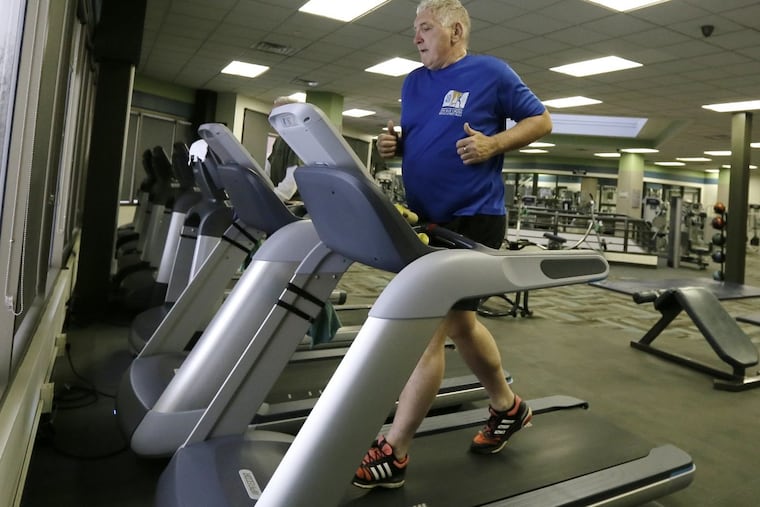Rehab after heart attack: How hospitals can make sure it happens
After implementing a new electronic alert system, the Hospital of the University of Pennsylvania saw its rehab referral rates jump from 12 percent to 75 percent.

Cardiac rehab — a 12-week program of supervised exercise and counseling — can improve the long-term health of patients after treatment for a heart attack or a stent procedure.
But too often patients never do it, in part because hospitals fail to help them navigate the complex process and set up appointments.
At the Hospital of the University of Pennsylvania, where referral rates for cardiac rehab have been as low as 12 percent, researchers tested a new strategy: an electronic alert system that "nudges" staff to connect patients with a rehab center near their homes.
The result: Referral rates shot up to 75 percent, the researchers reported this month at a conference of the American College of Cardiology.
For each patient who underwent treatment for a heart attack or received a stent, the nudge alert was sent automatically via secure text to case managers and a transitions coordinator. The team then identified a rehab facility in the patient's zip code, faxed a referral to that facility, and informed the patient that a representative would be in touch, said cardiac nurse Elizabeth Jolly, one of the researchers. The hospital also followed up with rehab centers by phone.
"You've got to have some type of standard way to make it happen," she said. "Patients don't necessarily do a great job when they're charged with doing something on their own."
Fittingly, one of Jolly's collaborators in studying the "nudge" alert was Mitesh S. Patel, director of the Nudge Unit — a behavioral design team embedded within the Penn Medicine health system. That unit has previously changed physician behavior with default settings in other electronic systems — including one effort that reduced the number of opioid pills in prescriptions and another that cut patient costs by listing generic medications ahead of pricier brand-name drugs.
Before implementing the cardiac rehab nudge, the hospital vetted 40 area rehab facilities in Pennsylvania, South Jersey, and Delaware, establishing contact with staff and verifying phone and fax numbers, Jolly said.
In addition to setting up the electronic alerts, the team also distributed educational materials to nurses and patients to promote the benefits of rehab.
The improved 75 percent referral rate was seen over a nine-month period, said Jolly and cardiologist Srinath Adusumalli, another one of the authors. Whereas some other hospitals use the term referral loosely to mean entering an order in a computer or handing the patient a piece of paper with instructions, the Penn team used a strict definition that included contact with the rehab center, said Adusumalli, a senior fellow in cardiovascular medicine.
"The connection is made," he said. "It's not just an order that's put in."
Asked why the success rate was not even higher than 75 percent, Adusumalli listed several reasons. If a patient is deemed too fragile for a traditional rehab program, for example, the physician can opt out of completing the referral process. And some gravely ill patients are referred for surgery, and thus are not immediately eligible for rehab, he said.
Next on the agenda is finding how many patients keep their appointments. But the front end of the pipeline is now clear, he said.
"In our mind, you don't even have the opportunity to go if you don't have the referral, so we wanted to tackle that problem first," Adusumalli said.